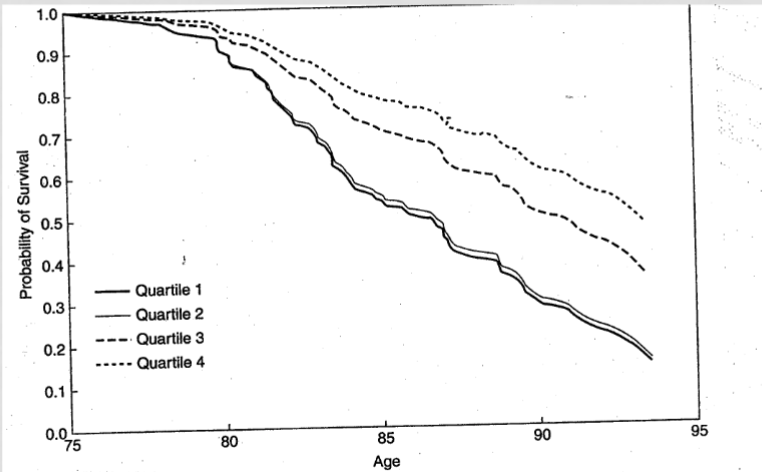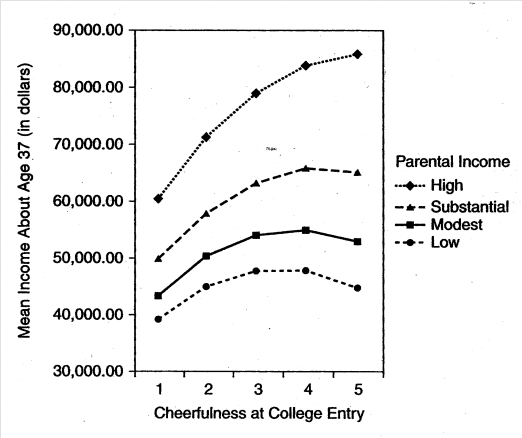Exam 1 Review
1/82
There's no tags or description
Looks like no tags are added yet.
Name | Mastery | Learn | Test | Matching | Spaced |
|---|
No study sessions yet.
83 Terms
Early missions of psychology
cure mental illness
make lives of all people more productive and fulfilling
identify and nurture high talent
APA president who named positive psychology a goal
Seligman
Pillars of positive psychology
positive subjective experiences
positive individual traits and practices
positive social institutions
What fields of psychology contribute to Pos Psych?
Health, Clinical, Developmental, Social & Personality
Two reasons we need positive psychology
provides a counter balance to natural tendency to attend to negative information
Understanding what makes life good is valuable in its own right
3 types of well-being
hedonic, subjective, eudaimonic
Hedonic well-being
experiencing high levels of pleasure and low levels of displeasure
Subjective well-being
high levels of positive affect + low levels of negative affect + life satisfaction
eudaimonic well-being
actualizing potential or finding a sense of meaning or purpose
PERMA
positive emotions, engagement, relationships, meaning, accomplishment
cultural considerations: eastern vs western world views
EAST: self transcendence, harmony, contentment, value suffering
WEST: self enhancement, mastery, satisfaction, avoiding suffering
Empirical research base
conclusions based on systemically collected data
randomization
participants randomly assigned to treatment groups. controls for confounds that can impact the DV
Mediator
the mechanism explaining the HOW in why two variables are related to each other
IV → Mediator Variable → DV, so therefore IV → DV
Moderator
for whom, in a causal relationship. relationship is different at different levels
Generalizing results
taking results from a study and applying them to a population
Only stupid people are happy - MYTH
Evidence: IQ and happiness usually no relationship, but when there is it’s positively correlated.
We can’t do anything about our happiness - MYTH
Evidence: happiness and related constructs can be changed within a window (older people happiness > younger people’s)
Pos Psych is only about happiness - MYTH
Pos Psych includes forgiveness, gratitude, love, kindness, hope.
Psychological health associated w/ positive and negative emotions.
hedonic vs eudaimonic well-being
Pos Psych only for privileged - MYTH
Some truth to this (freedoms, racial differences, stable living) BUT:
people from all backgrounds report searching for love and meaning, engaging in kindness and generosity.
Happiness Pie Chart estimates
Set point = 50%. Genetics and early influences
Circumstances = 10%. Money, job, relationships
Intentional activity = 40%. Purposeful goals, actions, and choices
Dimensions of affect (emotion)
Valence and Arousal
Valence dimension
pleasant to unpleasant (positive to negative)
attractiveness/appetitiveness = positive
aversiveness/ avoidance = negative
Arousal dimension
activation of physiological systems (high or low activation/arousal)
affect circumplex
interaction of valence and arousal produces subjective experience
Discrete affective experiences = emotions
Emotions = characteristic pattern of physiological arousal, thoughts, and behaviors
sensations
seconds long. Pleasure; often in response to sensory input such as taste, touch, smell, sight, and sound. Very quick. Typically high arousal
emotions
minutes to hours. Joy, pride, love. Example: sadness spiral (re-firing an emotion to keep it going). We don’t do this as much with positive emotions (not wanting to be egotistical or arrogant)
Mood
Hours to weeks. Cheery, good humor, depressive.
Traits
decades. Positive affectivity, extraversion. Big 5: openness to experience, neuroticism, extraversion, agreeableness, conscientiousness
Characteristics of pleasure
can result from addition or subtraction of stimuli. multidimensional
“raw” and associated with skin senses
pleasure may have some evolutionary bases (mating, eating, child-rearing)
experiential quality vs quantity
Peak-End
Pleasure memories impacted by the most intense period and last period of the experience
Duration neglect
we overestimate how long our emotions are going to last
Positive affectivity
one’s tendency to experience positive emotions
The Nun Study (2001)
Relationship between positive emotions and longevity in 180 nuns. Those with more positive words in their autobiographies at 22 lived significantly longer lives.
meta-analytic results later show link between mortality and subjective well-being

UK Million Women Study
Women self report on their happiness: 39% happy most of the time, 44% usually happy, 17% unhappy. Unhappy group had higher rates of mortality.
time frame not long enough to span women’s life spans
Mills College Yearbook Study
1958 and 1960 yearbook pictures. All but 3 women were smiling. Ranked smiles on Duchenne level scale.
Found: Duchenne level predicted marital status and happiness in marriages
Attractiveness did not predict satisfying relationship
Does money make you happier?
Weak relationship between income and happiness. More strongly related to life satisfaction.
At lower levels of income, income is more strongly related to positive affect
Wealthy nations > poor nations
Easterlin Paradox
More people have more money over time, but happiness scores aren’t changing. (adjusted for inflation). Happiness has stayed pretty stable even though income has changed a lot.
Does how you spend your money matter?
Spending money on things = shorter happiness boost (hedonic adaptation) than spending money on experiences
Hedonic adaptation
Emotional experiences will return to baseline emotional state (for positive and negative emotions)
We adapt to things more quickly than we adapt to experiences.
spending money on other people and buying back time associated with happiness
Cheerfulness, Income, and Parental Income
Parental income at 18 affects the strength of the relationship between your cheerfulness at 18 and how much money you make at age 37

Why do we have emotions?
May help integrate information
May be important to survival
Somatic marker hypothesis
bodily sensations give you information about what’s important in our environments
Facial feedback hypothesis
your emotions come from feedback from your face (smiling could cause you to be happier)
Behavioral action tendencies
what your body wants to do in response to an emotion. prolongs emotions.
Broaden and Build Theory
positive emotions → expansive awareness, thinking broadly → building resources → better equipped to handle later stress and threats
Broaden (b&b theory)
Positive emotions broaden thinking about possible actions, opening awareness to a larger range of thoughts and actions
have global and broadened thinking about your environment
Build (b&b theory)
Positive emotions related to survival and reproduction on a larger time scale because it allows you to build resources that help you.
Undoing hypothesis
Induction of positive emotion after induction of negative emotion associated with faster return to baseline physiological function.
positive emotion helps “undo” the effects of negative emotion
Transcendence
moving beyond the ordinary state
self-transcendence
move beyond egocentric concerns and basic needs. Connecting with something larger than yourself
What are the four theories of meaning in life?
Logotherapy, terror management theory, sense of coherence, four needs for meaning
Logotherapy
a theory of life purpose and meaning developed by Viktor Frankl.
Existential vacuum: a perception that the universe has no meaning. meaning only exists objectively in the world and is found through acting on values
Noogenic neurosis
Logotherapy theory. a mental illness caused by lack of meaning or purpose.
Three values: creative, experiential, and attitudinal.
Terror Management Theory
theory linking meaning in life to culture and self-esteem (ex: religions that promise a sense of “immortality”)
Putting our minds at ease to distract us from the reality that we don’t know how long our lives will be.
Sense of Coherence (SOC)
people seek to establish a sense of coherence in order to cope and achieve desired outcomes in life.
three components: meaningfulness, comprehensibility, and manageability.
Four needs for meaning
there is no single reason people seek meaning - Instead, people have four basic needs for meaning:
purpose, value, efficacy, self-worth
Religion
a fixed system of ideas or ideological commitments. institutional.
Spirituality
refers to a personal, subjective, and transcendent experience
Possible mechanisms linking R/S to Mortality
healthier behavior
coping
social support
psychological states
Morality
the principles and values that guide what people “should” do; internalized guidelines for what is right and wrong
Intrapersonal values
basic values that exist as part of a sense of self
Interpersonal values
values based on social context (shared morals outside of yourself)
Morals foundation theory: 6 values
care, fairness, liberty, loyalty, authority, sanctity
Care
cherishing and protecting others
Fairness
rendering justice according to shared values
Liberty
loathing of tyranny
Loyalty
standing with your group, family, nation
Authority
obeying tradition and legitimate authority
Sanctity
abhorrence for disgusting things
Affective Primacy
argument that affect (emotion) precedes cognition both situationally and phylogenetically (rational).
Emotional parts of our brains are older than rational, thinking parts of our brains. Situationally, emotionally comes first.
Moral intuition
fast, automatic, affect-laden processes in which evaluative (good/bad, like/dislike) appears in consciousness without any awareness of having gone through reasoning.
Moral reasoning
controlled, “cooler” process, conscious mental activity. THINKING.
Evidence for affective primacy
nearly instant implicit reactions
affective reactions usually predict later judgments and behaviors
manipulating emotions can influence judgments
experience of “moral dumbfounding”
Medial prefrontal cortex (including ventro-medial pre-frontal cortex and medial frontal gyrus) important in morality – integrate affect and reason/decision/plans
Three routes to happiness
The pleasant life, the engaged life, the meaningful life
the pleasant life
Involves doing things that bring pleasure, such as eating a favorite food, watching a movie, or shopping. However, these moments can be fleeting, and the brain adapts to repeated sensory input.
The engaged life
Involves being interested in activities and connected to others, such as in work, parenting, love, or leisure time.
The meaningful life
Involves feeling like what you do matters, and belonging to and serving something larger than yourself.
Intrinsic religious orientation
people who sincerely believe in their religions and attempt to live their lives accordingly. One of the most important aspects of their life.
Extrinsic religious orientation
people who treat religion as a means to other ends. They may sincerely believe in certain aspects of their religion, they don’t see the beliefs as primary ends in themselves.
Quest religious orientation
people who tend to openly face existential questions, treating religion as a continuous quest for answers rather than a set of already answered questions.
phenomenology
the study of subjective human experience
positive psychology
the study of optimal human functioning